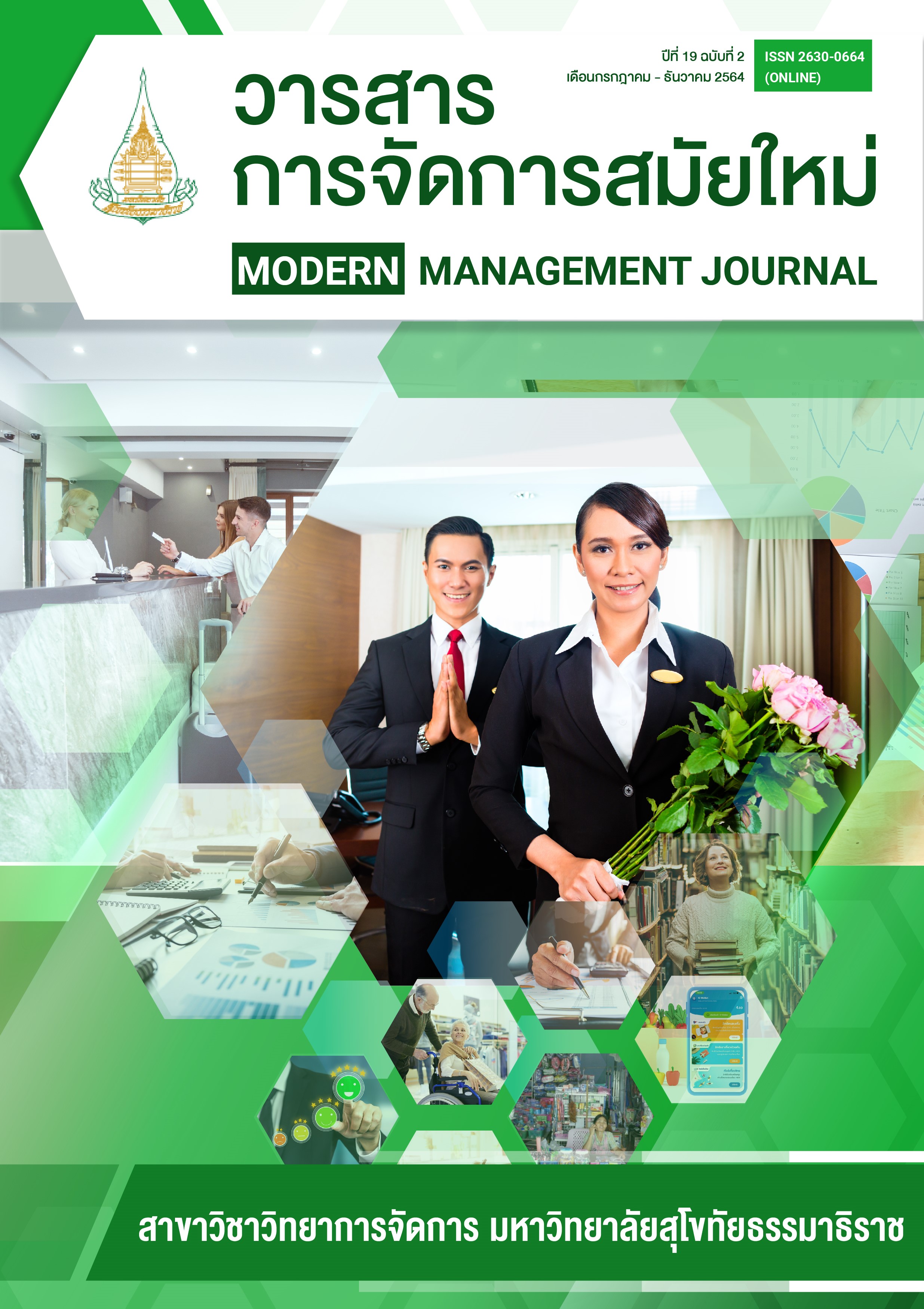Increasing Continual Intention to use Mobile Payment through a Half-Price Subsidy Campaign
Keywords:
M-payment, Attitude, Government, Economic, CoronavirusAbstract
The Thailand government offered 21.4 million citizens a 50:50 co-payment scheme as part of the economic stimulus program. The payment scheme specifically involved the use mobile phone payments
(m-payment) and for many of the citizens, this was their first experience with m-payment. This paper aims to understand the variables that accelerate continual usage intention of m-payment in everyday life by considering the user’s attitude during the Government’s economic stimulus scheme. A sample of 506 respondents through a questionnaire approach was collected and analyzed with the Structural Equation Modeling. The findings of the research revealed that economic benefits, enjoyment, health benefit and ease of use pose as the impact on attitude toward m-payment under the government’s co-payment scheme. Also, simply positive attitude was statistically significant to explain continual intention to use m-payment. The key findings from this study provide management and government authorities with key insights and practical considerations to encourage and stimulate adoption of m-payment. The findings can also equally be applied to adoption of other technologies by better understanding and promotion of the appropriate benefits that encourage usage of new technologies.
References
Aji, H.M., Berakon, I. & Husin, M.M. (2020). COVID-19 and E-wallet Usage Intention: A Multigroup Analysis between Indonesia and Malaysia. Cogent Business & Management. 7(1), 1804181. DOI:10.1080/23311975.2020.1804181.
Ajzen, I. & Fishbein, M. (1980). Understanding Attitudes and Predicting Social Behavior, Prentice Hall. New Jersey: Englewood Cliffs.
Apptopia. (2021). Number of Mobile App Downloads in 2021/2022: Statistics, Current Trends, and Predictions. Accessed 25 March 2021, Available at: https://financesonline.com/number-of-mobile-app-downloads/
Bangkokbiznews. (2021). The Co-payment Project, Phase 3 ', What Day will the Money go to the 'Pao Tang' App? Check Now, Retrieved from https://www.bangkokbiznews.com/
news/detail/944999. [in Thai].
Brown, D. (2020). Can Cash Carry Coronavirus? World Health Organization Says Use Digital Payments when Possible. Retrieved from https://www.usatoday.com/story/money/2020/03/06/ coronavirus-covid-19-concerns-over-using-cash/4973975002/
Cochran, W.G. (1997). Sampling Techniques. New York: Wiley.
Davis, F.D. (1989). Perceived Usefulness, Perceived Ease of Use, and User Acceptance of Information Technology. Mis Quarterly. 13(4), 319-340. DOI:10.2307/249008.
De Kerviler, G., Demoulin, N.T. & Zidda, P. (2016). Adoption of in-store mobile payment: Are perceived risk and convenience the only drivers?. Journal of retailing and consumer services. 31, 334-344. DOI:10.1016/j.jretconser.2016.04.011.
Fishbein, M. & Ajzen, I. (1975). Belief, Attitude, Intention and Behavior: An Introduction to Theory and Research. Massachusetts: Addison-Wesley, Reading, DOI:10.2307/2065853.
Fiscal Policy Office. (2021). Progress of the project Co-payment. Retrieved from https://www.คนละครึ่ง.com/assets/download/ข่าวแถลงกระทรวงการคลังฉบับที่%20153-2564.pdf [in Thai].
Gan, C. & Wang, W. (2017). The Influence of Perceived Value on Purchase Intention in Social Commerce Context, Internet Research. 27(4), 772-785. DOI:10.1108/intr-06-2016-0164.
Gefen, D., Rigdon, E. & Straub, D. (2011). An Update and Extension to SEM Guidelines for Administrative and Social Science Research. Editorial comment, Mis Quarterly. 35 (2), 1-7. DOI:10.2307/23044042.
Hair, J.F., Black, W.C., Babin, B.J. & Anderson, R.E. (2010). Multivariate Data Analysis: A Global Perspective. New Jersey: Pearson Education Inc.
Jaziri, R. & Miralam, M. (2019). Modelling the Crowdfunding Technology Adoption among Novice Entrepreneurs: an Extended TAM Model. Entrepreneurship and Sustainability Issues. 7(1), 353. DOI: doi.org/10.9770/jesi.2019.7.1(26).
Karlnate,T. & Vannavanit,Y. (2021). A Technology Acceptance Model and Trust As Influencers of “SCB Easy” Usage. Journal of Suvarnabhumi Institute of Technology (Humanities and Social Sciences). 7(1), 374-389. [in Thai].
Khumthinkaew, C. & Parncharoen, C. (2019). Personal Characteristics and Technology Acceptance Towards Payment via QR Code System of Consumers in Bangkok. Suthiparithat. 33(106), 58-69 [in Thai].
Lee, M.C. (2009). Factors Influencing the Adoption of Internet Banking: An Integration of TAM and TPB with Perceived Risk and Perceived Benefit. Electronic Commerce Research and Applications. 8(3), 130-141. DOI:10.1016/j.elerap.2008.11.006
Liébana-Cabanillas, F., García-Maroto, I., Muñoz-Leiva, F. and Ramos-De-Luna, I. (2020). Mobile Payment Adoption in the Age of Digital Transformation: The case of Apple Pay. Sustainability. 12(13), 5443. DOI:10.3390/su12135443
Park, J., Ahn, J., Thavisay, T. & Ren, T. (2019). Examining the Role of Anxiety and Social Influence in Multi-Benefits of Mobile Payment Service. Journal of retailing and consumer services. 47, 140-149. DOI:10.1016/j.jretconser.2018.11.015
Poompruk, C. & Erb-im, N. (2021). Marketing Automation: The Business Success Tool for Digital Marketers. Journal of Management Science Review. 23(1), 221-230. [in Thai].
PWC. (2019). It’s Time for a Consumer-Centred Metric: Introducing Return on Experience. Retrieved from: https://www.pwc.com/mx/es/publicaciones/archivo/2019/03/20190322-pwc-mx-global-consumer-insights-survey-2019.pdf.
Statista. (2020). Number of Smartphone Users in Thailand from 2017 to 2019 with a Forecast for 2020 to 2025 (in millions). Retrieved from https://www.statista.com/statistics/467191/forecast-of-smartphone-users-in-Thailand/.
Saiphet, K. (2021). The Coronavirus Disease 2019 (Covid-19) and Economic Adaptation Opportunities of the Hotel Industry of Thailand. Journal of Management Science Review. 23(1), 207-220. [in Thai].
Tabachnick, B.G. & Fidell, L.S. (2007). Using Multivariate Statistics. Boston: Pearson.
Thaler, R. (1985). Mental Accounting and Consumer Choice. Marketing Science. 4(3), 199-214. DOI:10.3386/w18248
Venkatesh, V., Thong, J.Y., Chan, F.K., Hu, P.J.H. & Brown, S.A. (2011). Extending the Two‐stage Information Systems Continuance Model: Incorporating UTAUT Predictors and the Role of Context. Information Systems Journal. 21(6), 527-555. DOI:10.1111/j.1365-2575.2011.00373.x.
Wu, J., Liu, L. & Huang, L. (2017). Consumer Acceptance of Mobile Payment Across Time. Industrial Management & Data Systems. 117(8), 1761-1776. DOI:10.1108/imds-08-2016-0312.
Downloads
Published
How to Cite
Issue
Section
License
Copyright (c) 2022 Modern Management Journal

This work is licensed under a Creative Commons Attribution-NonCommercial-NoDerivatives 4.0 International License.



